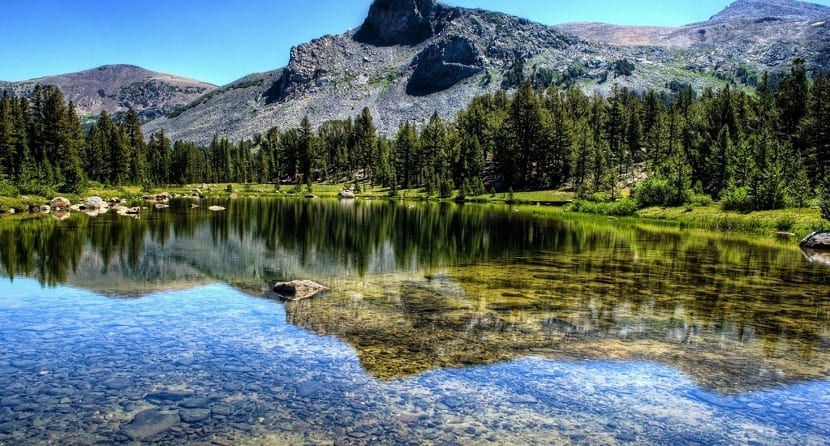
Many times in life it is said that reality is stranger than fiction. And it is that in nature there are exceptional cases of places with incredible or very special beauty due to their characteristics, exotic flora and fauna or because the strangest natural phenomena in the world occur in them.
In this case I am going to talk about Lake Baikal. This lake is the most famous in the world for many reasons. It is of great importance for scientists and for tourists as well. Do you want to know the reasons why it is so important and how incredible it can be?
Origin and characteristics of Lake Baikal
This lake has a tectonic origin. This means that it has been originated by movements of the tectonic plates that exist on Earth (to learn more about tectonic plates read The inner layers of the Earth). It is located in the southern region of Siberia, Russia, between Irkutsk Oblast in the northwest and Buryatia in the southeast, near the city of Irkutsk. It is known as the "Blue Eye of Siberia" y "The Pearl of Asia".
The formation of Lake Baikal is estimated to date back to about 25-30 million years. In geological terms we can say that we did not find the oldest lake in history.
Such is the importance of this lake that it was named World Heritage Site by Unesco in 1996. It is one of the least cloudy lakes in the world (hence the nickname of the Blue Eye). Turbidity is measured with Secchi discs. These discs allow us to know the amount of light radiation that enters through the water and thus to know the radiance. Well, the amount of light that reaches depth has been measured and light marks have been recorded up to 20 meters deep.
This lake also stands out for having around 20% of the fresh, unfrozen water on the planet (about 23.600 km3 of water). It can hold so much water since it is very deep and because it is fed by 336 tributaries. The dimensions of Lake Baikal are: 31.494 km² of surface, 636 km long, 80 km wide and 1.680 m deep.
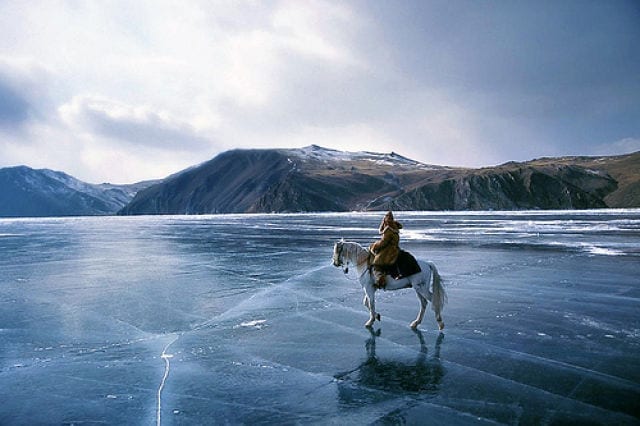
The frozen Lake Baikal. Source: http://www.rusiamia.com/rusia/turismo/lago-baikal-rusia/
Another feature that makes it so special is that it is the only lake in which its sediments have not been affected by continental glaciers despite being a high latitude lake. Studies have been carried out on the lake's sediments and it has been estimated that if all the sediment that has accumulated in these 25-30 million years could be removed, the lake would reach depths of up to 9 km.
The lake is completely surrounded by mountains (hence the fact that it has so many sediments) that are technically protected as a national park for its conservation and it has about 22 small islands. The largest island is called Olkhon and it is about 72 km long.
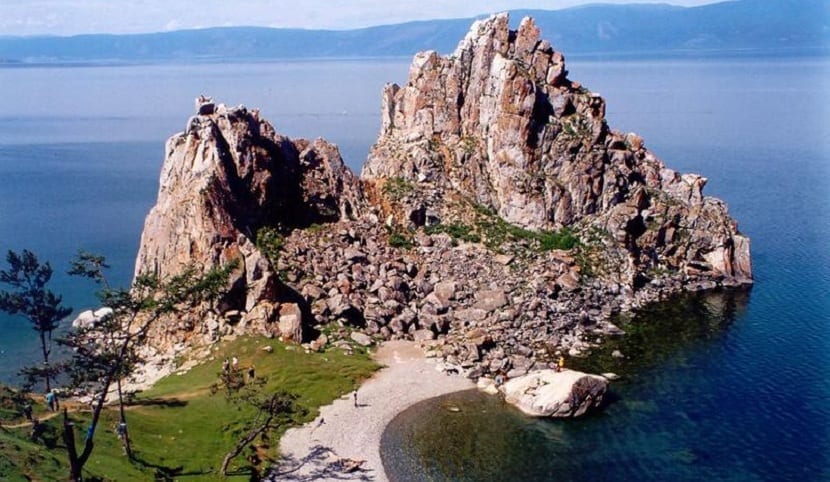
Olkhon Island
Importance of Lake Baikal
This lake, as I have mentioned before, has a great importance focused from two points of view: as a place to visit and do tourism or as scientists where you can discover the unique characteristics that make it so special.
The first characteristic that makes it so important for the scientific community is that a single lake such as this one houses 20% of the fresh water reserves of the entire planet. In the event that its 336 tributaries stop providing water and feeding it, the lake would take about 400 years to empty through the evaporation process. One of the most curious calculations made by scientists is that if the entire world population were supplied by only this lake, they could live for 40 years and would not have problems of water shortage.
The clarity of the water mentioned above also makes it special. The low turbidity it has is due to the fact that microorganisms live in its waters that purify in water and perform a good cleaning. Some studies have been done to see if these microorganisms can be used to clean up oil spills in other waters due to their high purification rate.
The crystal clear water is used for some medical treatments, especially for some diets that are poor in mineral salts. In ancient times, Asians considered Lake Baikal a holy place. Even today you can see on the sides of the lake the remains of buildings that the ancient tribes used to the rituals in which they were invested with the energy of the lake.
Another characteristic that makes it so special to the scientific community is the extreme weather conditions in which it is found. In winter the lake temperatures can reach 45 degrees below zero. However, Lake Baikal is a haven for flora and fauna. 1.600 genera of animals and 800 plants coexist that are cataloged so far. In it there are numerous endemic species such as the seal and the Baikal sturgeon, the golomjanka fish and the epishura crab (a tiny animal whose role is fundamental in the food chain, since it filters water through its body). The role of the epishura is so important as it is a species with great abundance. There are up to 3 million of these crabs per square meter of surface. They are very small, only about 2 millimeters in length, but their ability to filter water is incredible. Thanks in large part to them is why the lake is so clear. In 1976, a factory that was in charge of making pulp dumped its waste directly into Lake Baikal and endangered the survival of these crabs and other endemic species.

Lake Baikal Crab
This lake grows every year about two centimeters. This causes numerous earthquakes due to the continuous movement of tectonic plates. This lake can hold more water each year.
Curiosities of Lake Baikal
At the bottom of the lake there a stainless steel pyramid with the coat of arms of Russia. This is due to the first expedition mission that managed to reach the bottom of the lake on July 29, 2008.
This lake also became very famous not too many years ago thanks to a phenomenon that occurred on its surface and was observed for the first time by the astronauts of the International Space Station (ISS). This phenomenon consisted of a large mark on the surface of the lake (which was then frozen) very similar to the one left a glass of water on a table. The mark was about 4,5 kilometers in diameter. People dedicated to paranormal subjects said that it could be the result of the vestiges of UFO landings (following the same logic of crop circles).
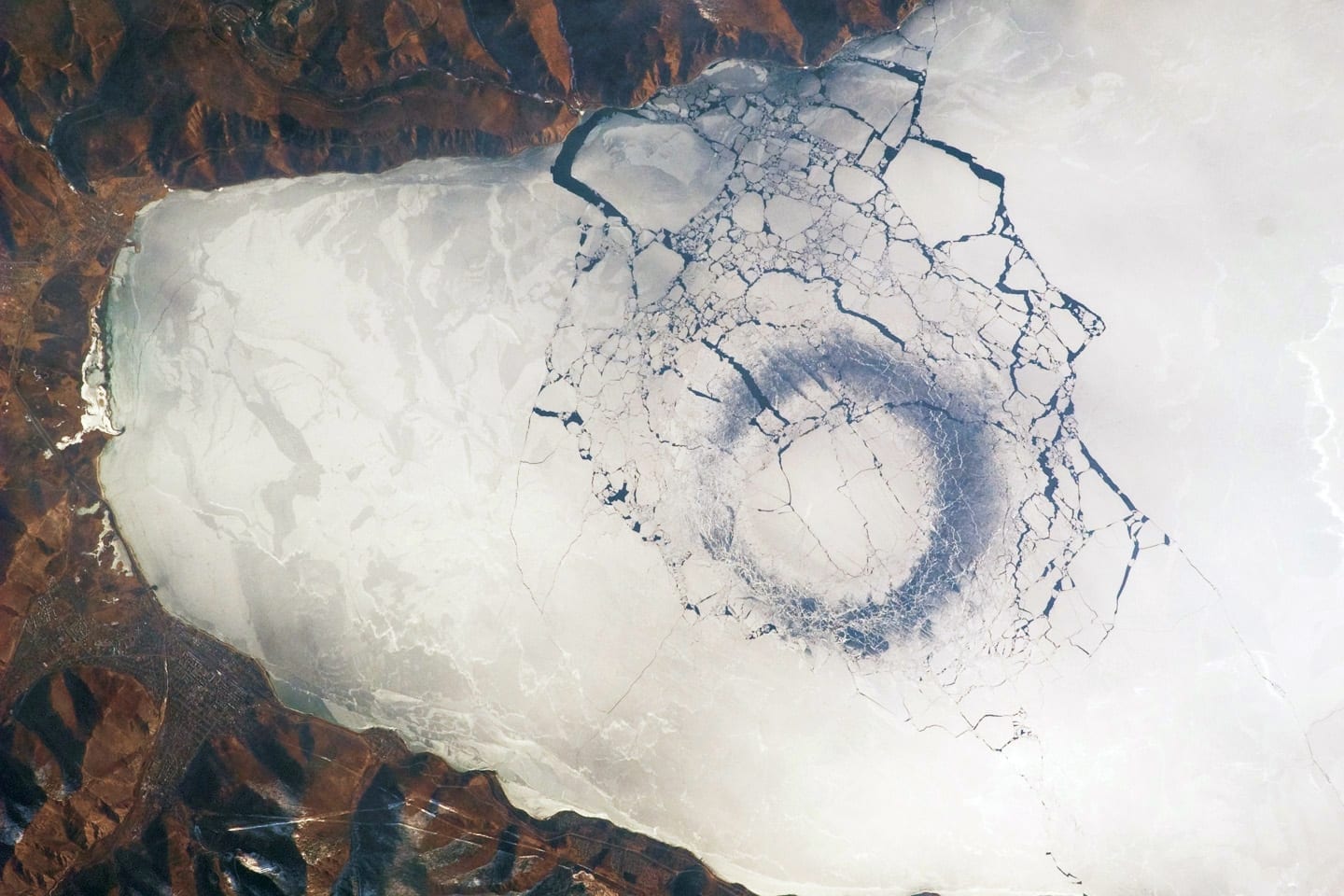
Lake Baikal Circle
On the other hand, the scientific community gave a somewhat more coherent explanation of this phenomenon. It was a darker circle caused by the convection of the water. The warmer and less dense water rose to the surface and when it encountered the cold of the environment it froze forming a thin layer of ice. The most superstitious said that if you navigated the edges of that circle it would happen to you the same as with the phenomenon of the Bermuda triangle, you would be engulfed by very turbulent currents coming from the depths of the lake.
Tourism in Lake Baikal
In order to visit and enjoy Lake Baikal, you can take trips on the Trans-Siberian train. This train it completely surrounds it, crossing about 200 bridges and about 33 tunnels. In the shops around the lake they sell smoked omul fish and you can enjoy while observing the beautiful landscape.
The southeastern part of the lake is, without a doubt, the most touristy since the northeastern part is practically abandoned.
Lake Baikal and climate change
Many scientific studies have shown that the effects of climate change and global warming they can make this lake much less interesting. One of these studies was published in the journal BioScience. The author of this investigation was Marianne V. Moore and noted that the lake's climate has become much milder with a range of temperatures not as extreme as previously. In winter the lake remains frozen much less time than before. This fact can cause damage to the ecosystem and the most vulnerable fauna such as the nerpa seal. This endemic seal is the only freshwater seal in the world and can only mate and give birth on the ice of Lake Baikal. As this ice exists for less time, the birth capacity and opportunity is much lower, so the seal population decreases. To this is added the human being. Of course, the human being hunt these seals stealthily and massively that constitute one of the most solid bases for the economy of the region.
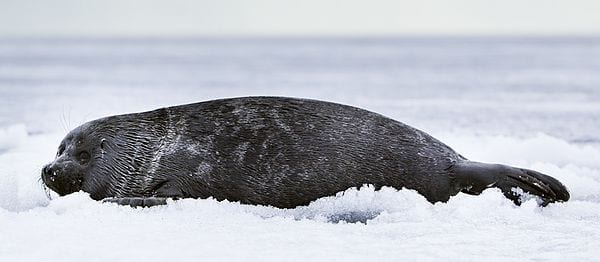
The nerpa seal needs ice for its reproduction. Source: http://www.rdrusia.com/rusia-el-lago-baikal/
Finally, one of the curiosities of this lake is that it is the only place where you can get neutrinos. These are particles that are barely found on Earth and that provide us with a wealth of information about the life of other planets and galaxies and what happens in outer space.
As you can see, this lake, from beginning to end, is a marvel for both scientists and tourists. So you can pack your bags and organize your next trip 😉